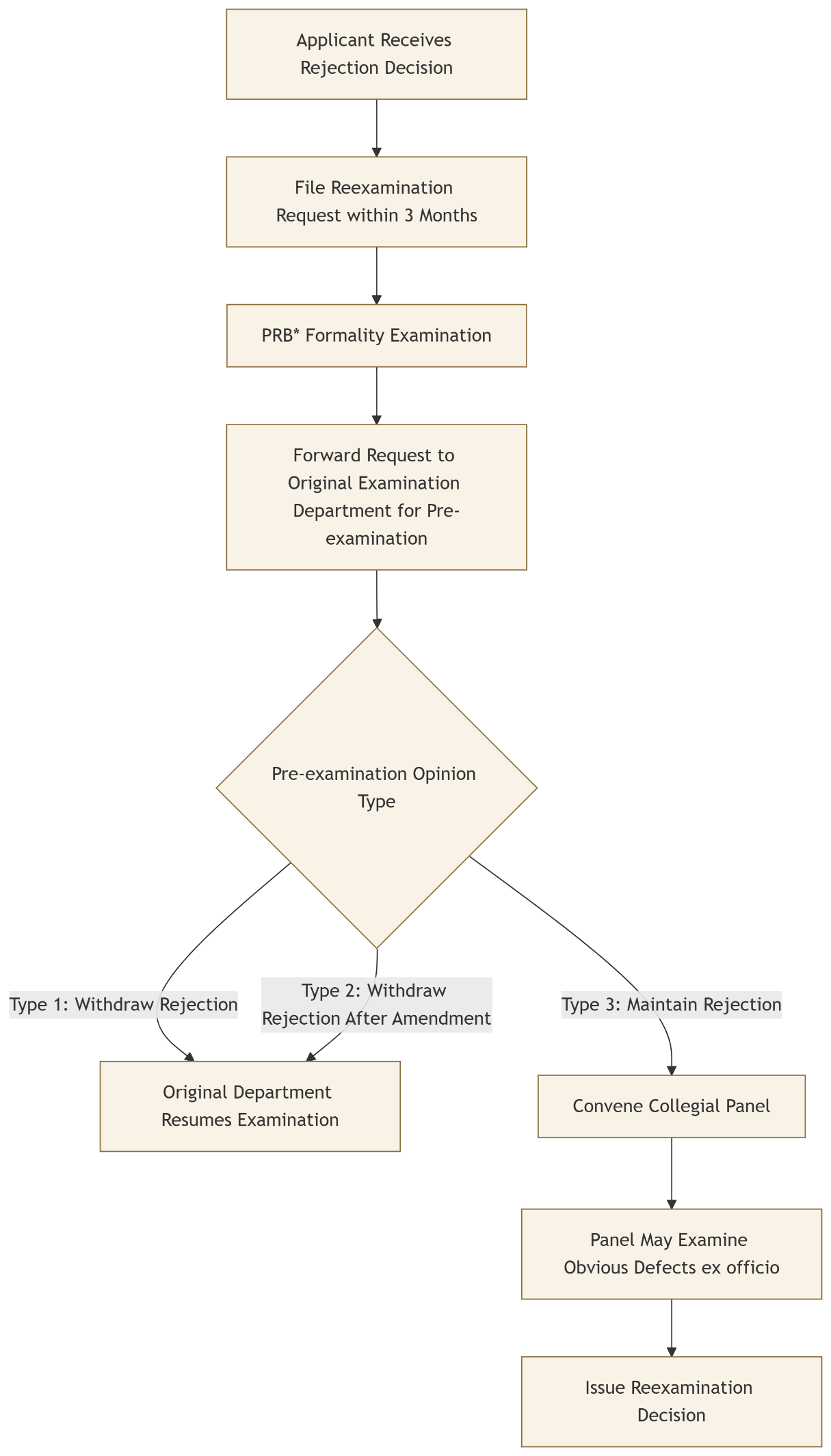Reexamination proceedings serve as a remedial mechanism for patent applicants contesting a rejection decision, functioning as a continuation of the patent examination procedure. Only patent applicants are entitled to initiate such proceedings, which must be filed with the Patent Reexamination Board of the China National Intellectual Property Administration (CNIPA) within three months of receiving the rejection notification.
In terms of examination scope, the Patent Reexamination Board (PRB) primarily focuses on the grounds and evidence cited in the rejection decision, though the collegiate panel may proactively examine any unaddressed material substantive defects under its authority.
Upon initiation, the Reexamination Board conducts a formal examination of the request before forwarding it to the original examination department for preliminary review, which subsequently issues a preliminary examination opinion.
Three types of preliminary examination opinions may emerge:
1. Acknowledging the reexamination request and recommending revocation of the rejection decision;
2. Confirming that amendments submitted by the reexamination requester have addressed identified defects, thereby supporting revocation of the rejection decision based on the amended text;
3. Maintaining the rejection decision due to insufficient justification or textual amendments to warrant revocation.
Key requirements for preliminary examination include:
If the original examination department upholds the rejection, detailed reasoning must be provided; simplified explanations suffice when opinions align with the original rejection rationale. Should the preliminary opinion sustain the rejection, the Patent Reexamination Board will convene a collegiate panel for substantive review.
For amended texts submitted by the requester, the original examination department must conduct preliminary review based on the amendments if deemed compliant; non-compliance requires detailed justification alongside identification of unresolved substantive defects in the original application.
New evidence or arguments presented by the requester necessitate substantive review by the original department, though supplementation of new rejection grounds or evidence is prohibited at this stage.
Critically, should the preliminary opinion directly recommend revocation, the reexamination process bypasses collegiate review, proceeding directly to decision-making based on this opinion before returning to the original department for continued examination.

Strategic Significance of Communication
In reexamination proceedings, original examiners' decisions may contain oversights arising from technical misinterpretations of application documents or incomplete prior art searches. Leveraging examination guidelines governing review scope, procedural rules, and preliminary opinion requirements, communication quality with original examiners becomes pivotal when potential misunderstandings are identified. This interaction holds threefold strategic value:
1. Direct dialogue enables precise identification of the examination decision's rationale, empowering applicants to strategically refine their applications;
2. Effective communication may prompt examiners to revisit initial determinations, potentially leading to revocation when compelling counter-evidence is presented;
3. This mechanism constitutes the linchpin of the preliminary review stage, serving as both an efficient means to clarify ambiguities and focus on critical issues, and a cost-effective strategy to avoid procedural redundancies. Systematic implementation as a core reexamination strategy often circumvents prolonged collegiate review, significantly enhancing the probability of successful patent grant. Neglecting this interaction risks forfeiting the most expeditious remedial avenue, thereby necessitating entry into the more time-consuming and uncertain collegiate review phase.
